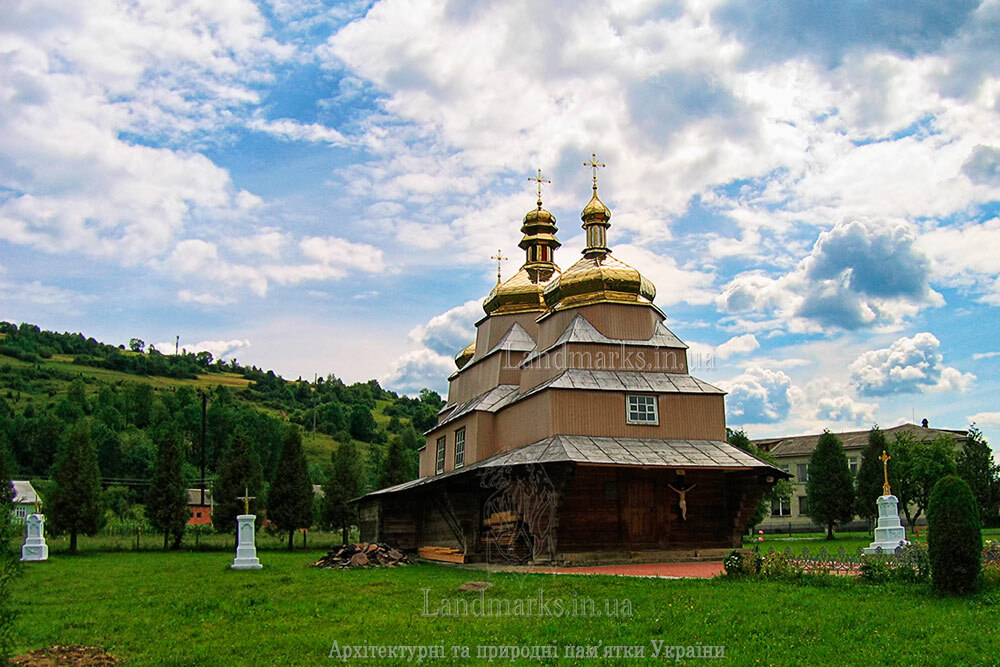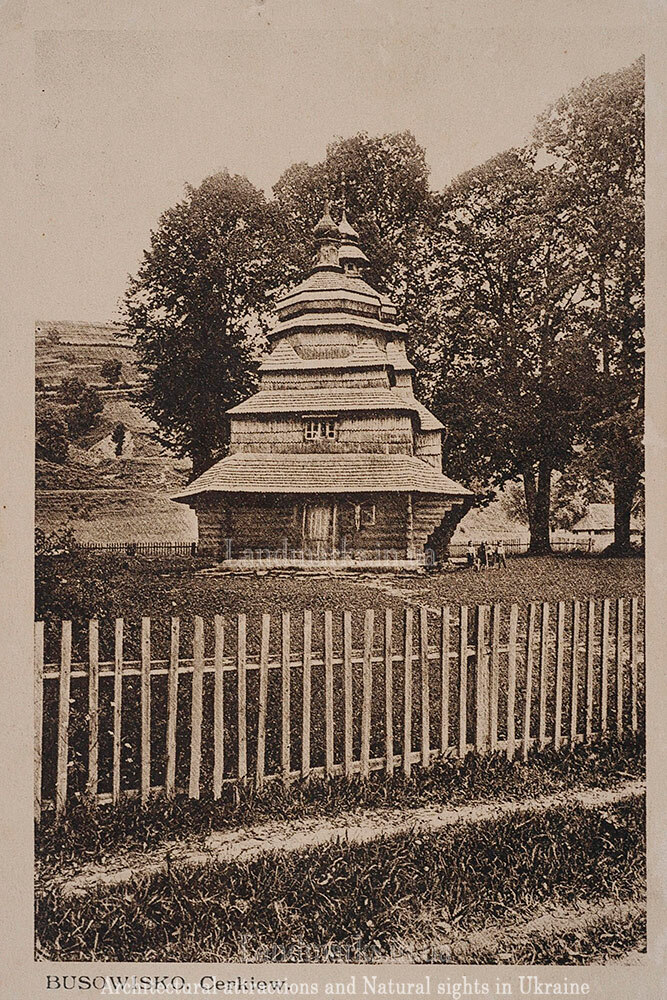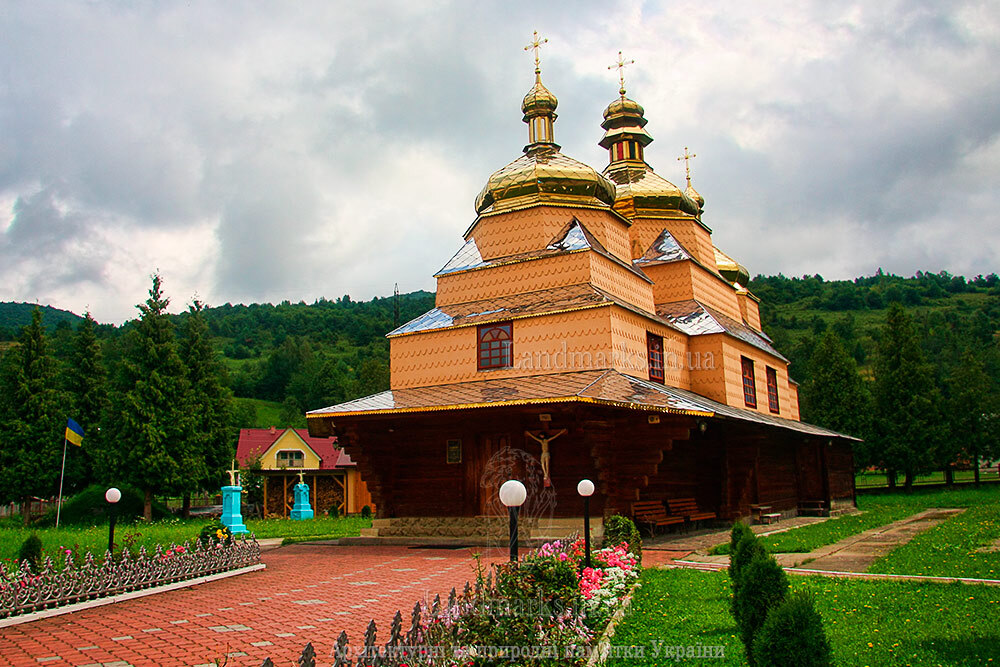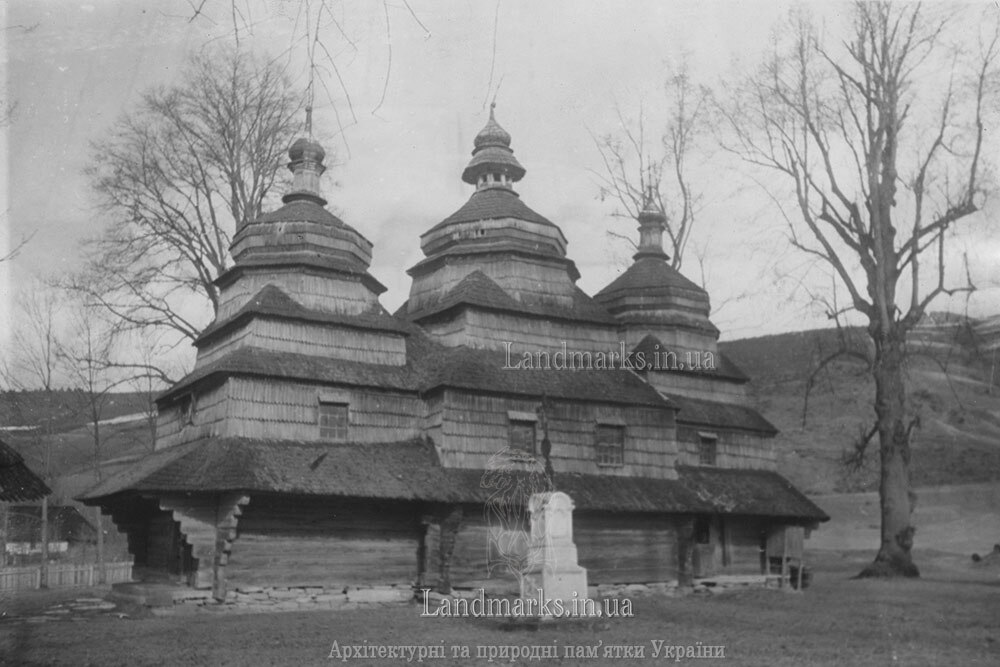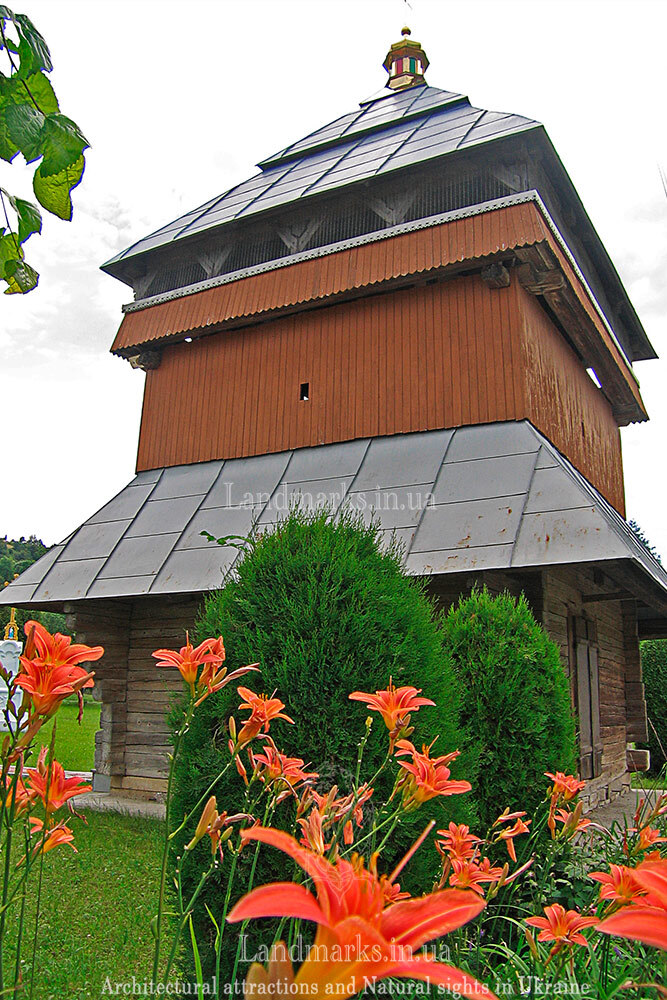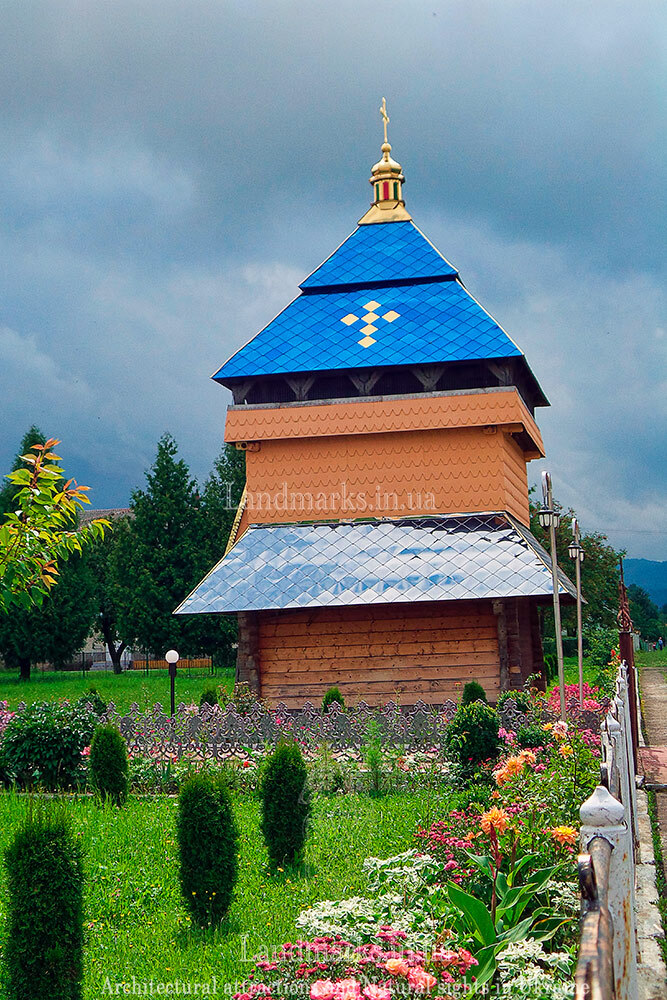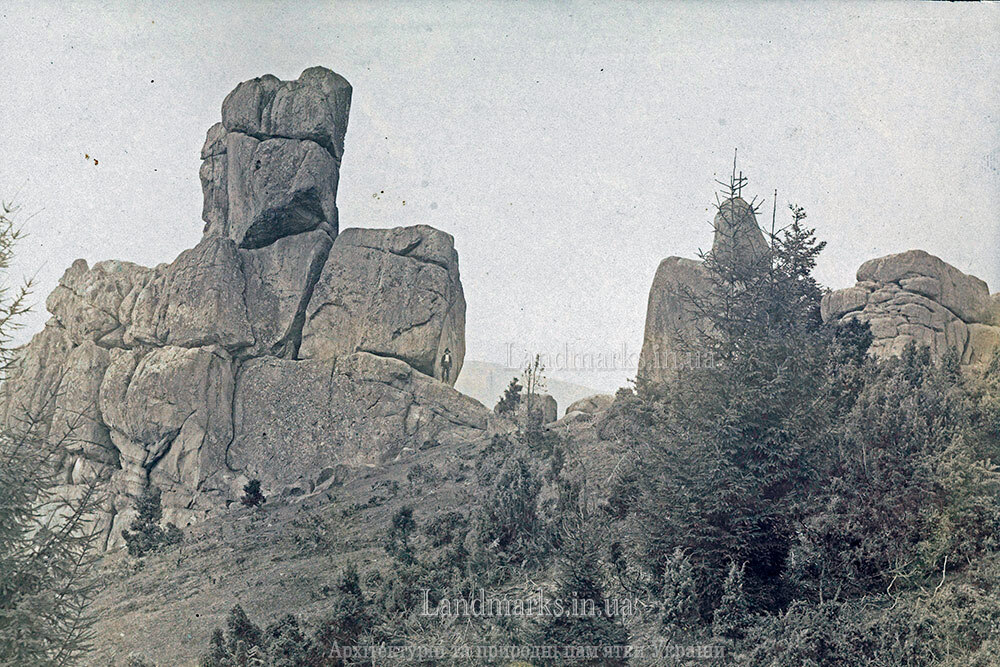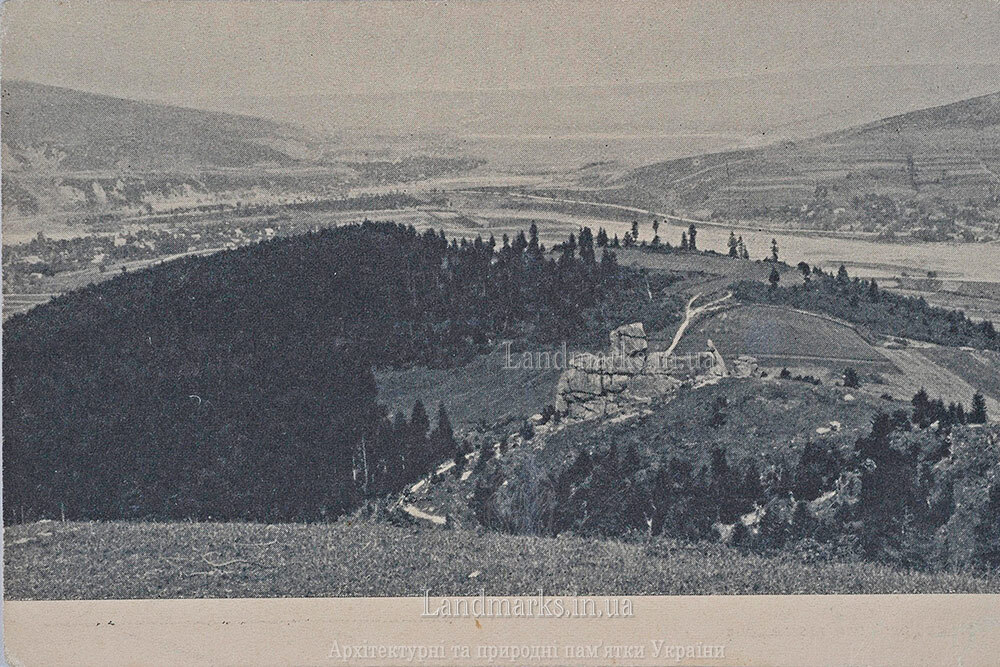Church of the Cathedral of the Blessed Virgin Mary
The Church of the Nativity of the Virgin Mary was built in 1780 as a successor to the old church, which was first mentioned in 1695. A two-tiered bell tower was built next to the new church 8 years later. The dates should be indicated on the west door of the church and on the door of the bell tower.
The church in Busovisko is made of wood, built of fir-tree beams, three-story and three-domed. The old church and bell tower in Busovyske represent a unique ensemble of architecture of the Boyko school. It is worth adding that the previous church was also a three-story structure but had two two-bay roofs.
The interior is decorated with an altar of the late eighteenth century. There are the icons by unknown authors "Transfiguration of Christ" (XIV century) and "Bowing of Kings and Eastern Wise Men to Jesus" (mid-16th century) in the church. These images were taken from the monastery's cathedral, which was located in the neighboring village of Spas. The monastery was closed, and the icons and some church utensils were taken to the church in Busovsko. But the icon "Adoration of the Magi," which also dates from the mid-16th century and was in the church for a long time, now belongs to the funds of the National Museum named after Andriy Sheptytsky in Lviv.
During the Soviet period, for thirty years in a row, the church was closed. Since the 1990s, the building has acquired the status of an architectural monument of national importance in Ukraine. Today it is a functioning church of the Orthodox Church of Ukraine.
As we can see at archival photos of the 1920s, the church had an original shingle roof. After the renovation, the church was covered with tin, which is unaesthetic and damages the preservation of the monument.
Spassky stone
Between the villages of Busovysko and Spas, the Spas Stone, or as it is called the Devil's Stone, is hidden in the forest.
The building of the old school
In 1880, an exemplary school was built in Busoviske at the expense of the village community, as recorded in a 1939 monograph on the Starosambir region by Sofia Steshalska, who noted that the building could serve as a model for the construction of such structures in other villages.
The school building is now preserved in the Klymentii Sheptytskyi Museum of Folk Architecture and Life in Shevchenkivskyi Hai.
